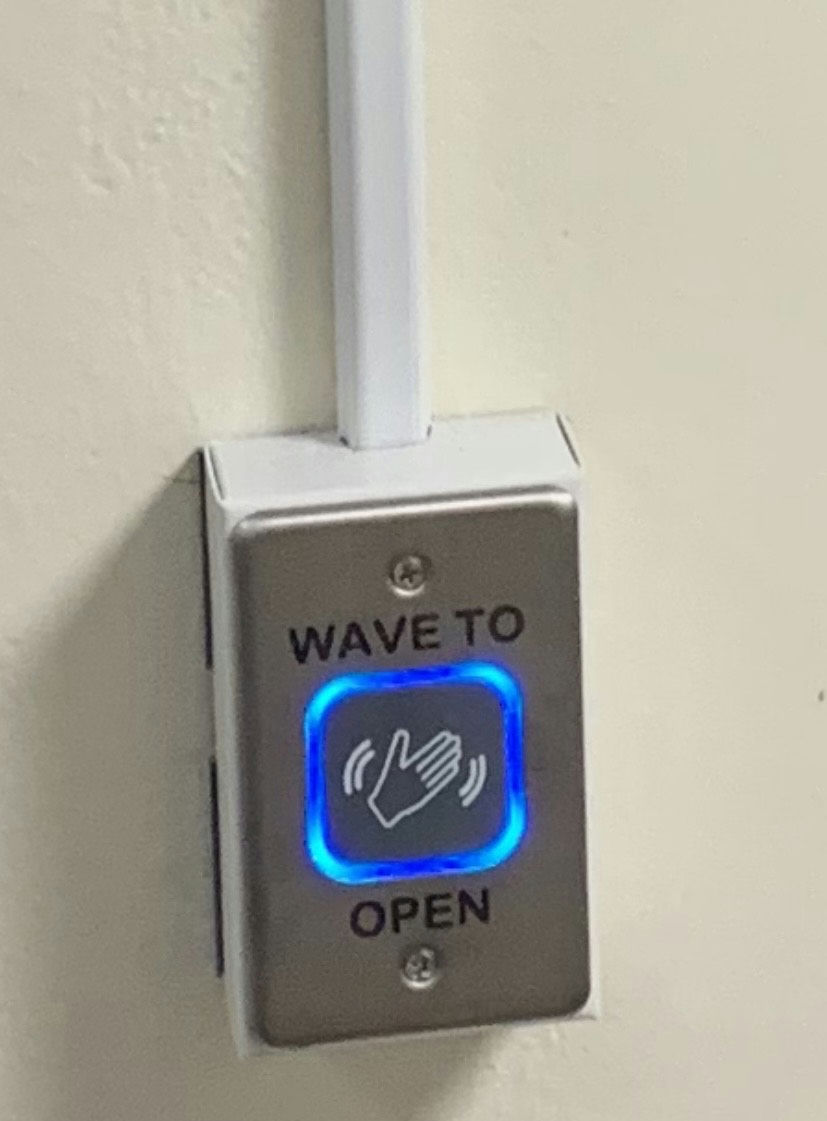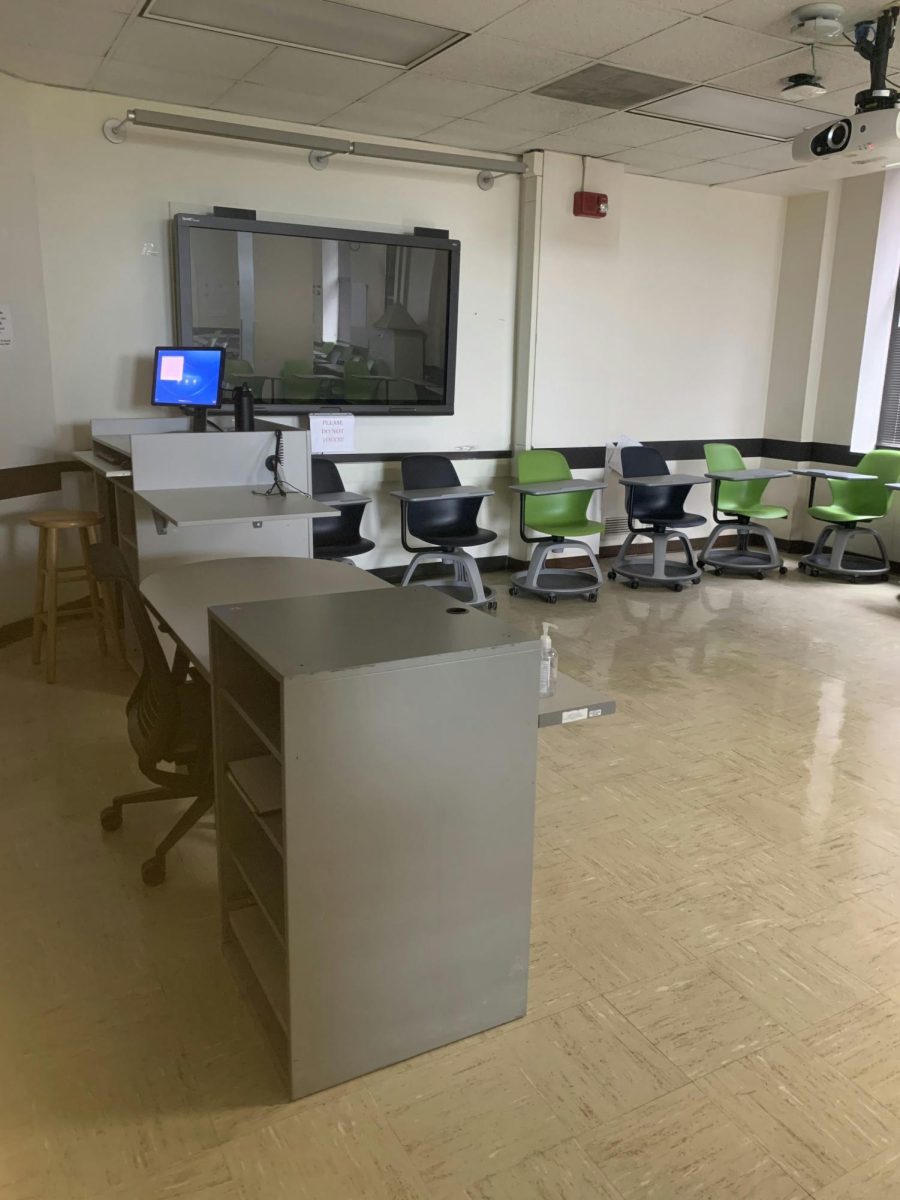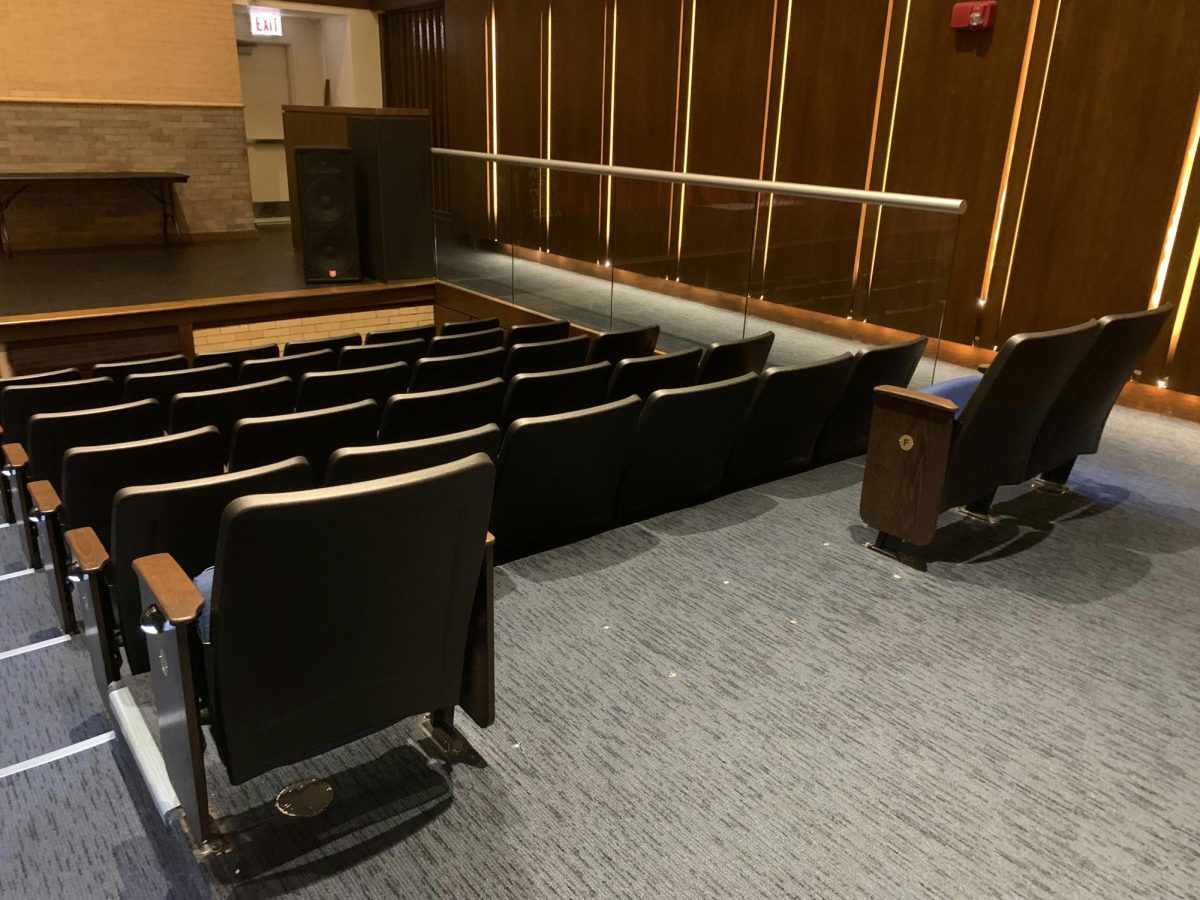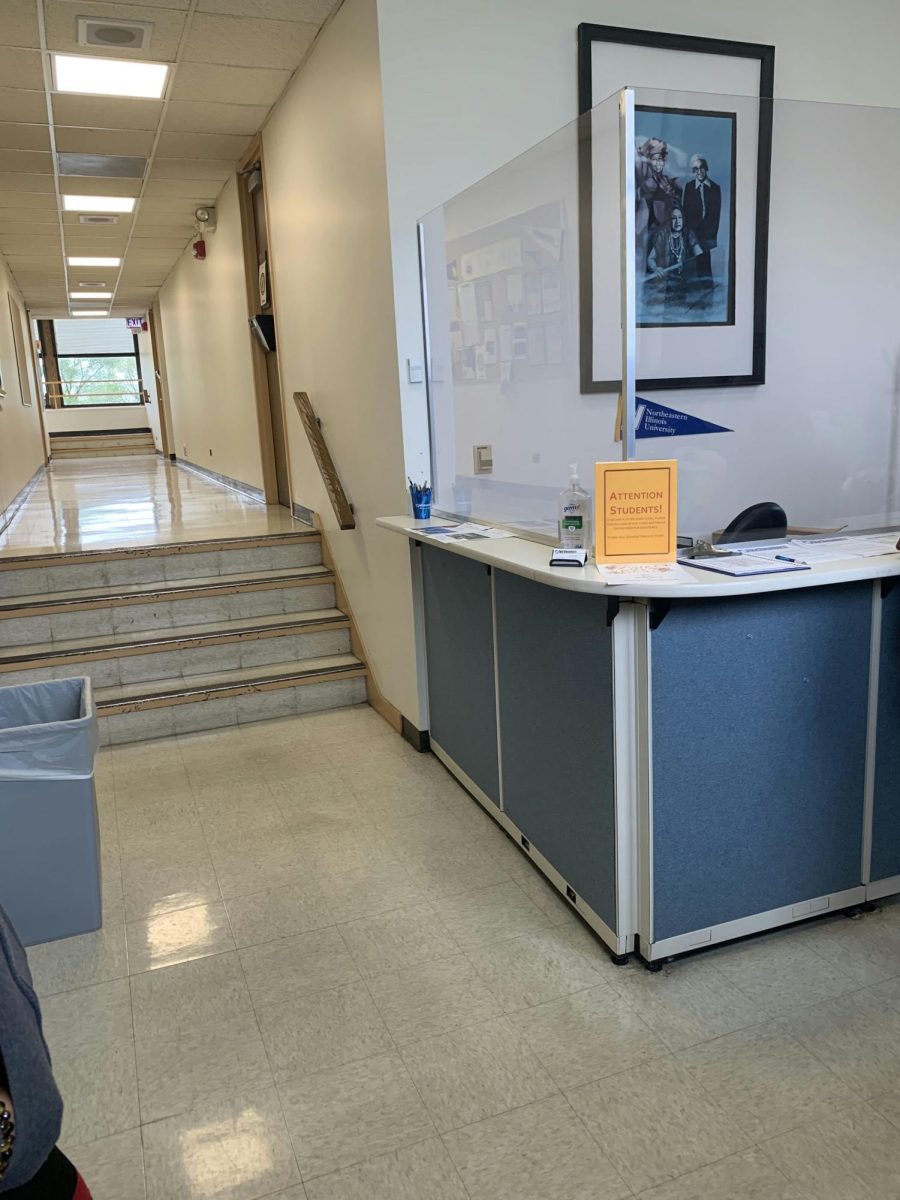Mobility Impairment Accessibility at Neiu Carruthers Center for Inner City Studies Building
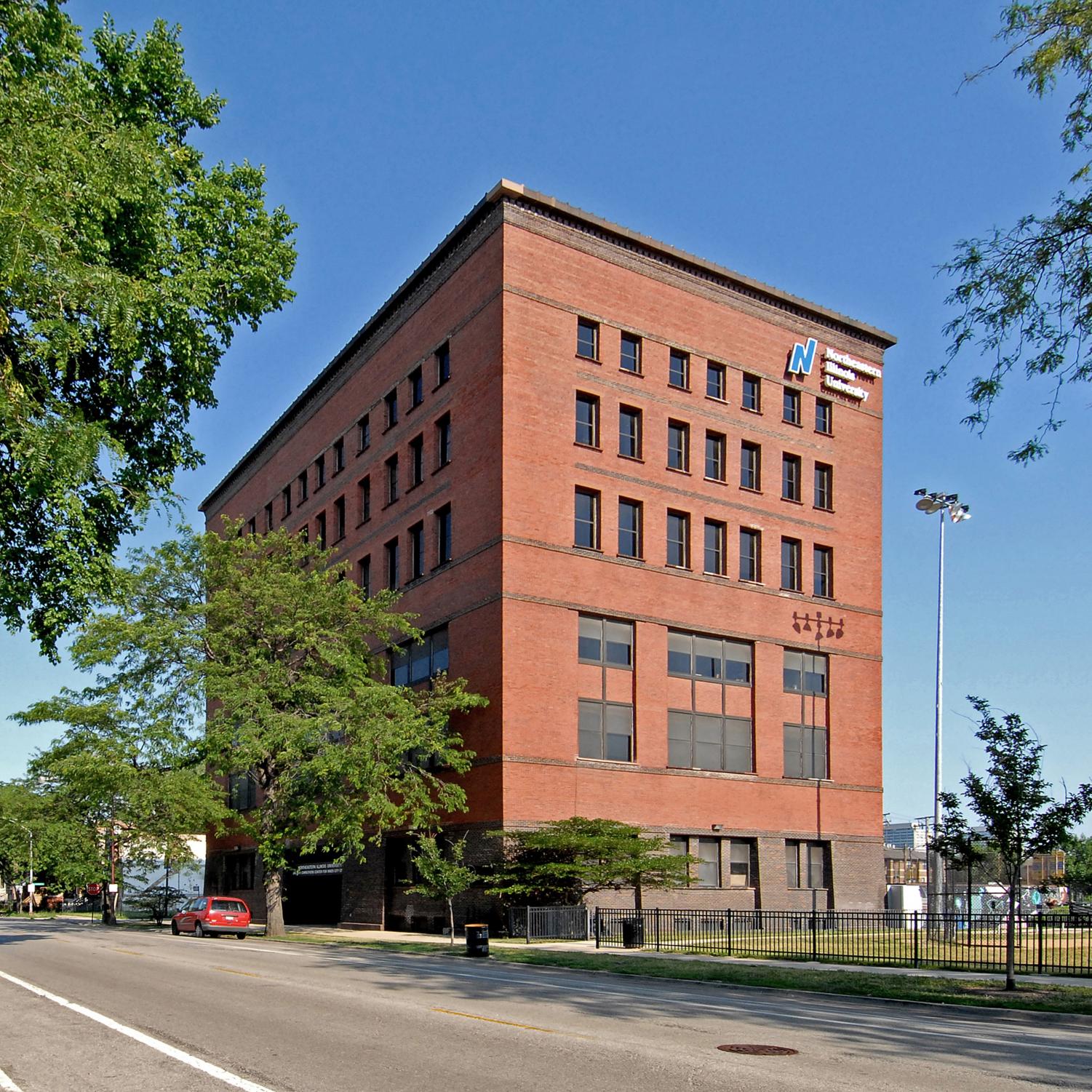
NEIU’s satellite campus, the Carruthers Center for Inner City Studies (CCICS, is located in the Bronzeville neighborhood on the South Side of Chicago. According to the NEIU institutional Definition of Accessibility draft, “accessibility is the condition of meeting the access needs of those who want and need to participate fully in a group, space, or activity.” I was given a tour to evaluate whether the building was accessible for people with mobility impairments.
According to the University of Washington, “mobility impairment is a disability that affects movement motor ranging from gross motor skills, such as walking, to fine motor movement, involving manipulation of objects by hand.” This disability may require the use of canes, walkers, or wheelchairs but may also include limited or no use of the upper extremities and hands.
When entering the CCICS building, there are a few steps to walk up but there is a rear door where the ramp eliminates the need to go up the steps. At the entrance, there’s a front desk where a worker can greet and assist students and the walls are surrounded with art created by students. There are two staircases, one that leads to the north side of the building and another that leads to the south side of the building. The building has seven floors, six of which are available for student use. The school is very welcoming; they’re always hosting events and advocating for the African American community.
From the outside, the building looks older and plain, but the inside has up-to-date accessible technology. After getting my full tour around the building, I was able to determine that the building is accessible enough for people who have a mobility impairment. The bathrooms and classrooms are very accessible with a “wave to open” door opening device for the bathrooms and a “touchless door activation “ for the classrooms. Both work the same way, though not every classroom or bathroom has such a device but the ones that do are in working order.
Most of the classrooms have movable chairs and tables that, I believe, are helpful to accommodate people who have a mobility impairment. Some classrooms have chairs that are connected to the tables, but the school was able to put regular tables and chairs in the classrooms for students who use a wheelchair. I find this to be very considerate and useful.
The school was very deserted so I didn’t have any students or many staff members to discuss their opinions about accessibility in the building. However, I was able to interview a couple of staff members who all agreed that the building is very accessible. But there was also one thing that they agreed needed changing.
They all agreed that the office needs some reconstruction. I was able to enter the administrative office and the offices of admissions. When I first enter the offices, there’s a front desk where a staff member is usually seated. In the back of the offices are rooms where advisors or other staff members can meet their students.
The problem is that you must walk up four steps to access the back of the office. At that moment, we all agreed that it would be difficult meeting with students who may have a mobility impairment because it would be a challenge for them to make it to the back offices. Staff members who use a wheelchair or walker or who have chronic pain may also not be able to access their workplaces.
Overall, the tour was a great experience and I concluded that the school is welcoming for students with a physical disability, but the offices do need to be more accessible. There will be students who may have a mobility disability who need to meet with staff members.
If enough complaints are forwarded to the administration, reconstruction of the space might be possible, or designing a different meeting place for those individuals unable to handle the steps. NEIU’s CCICS, on the South Side is indeed accessible for people and sensitive to the needs of those who have mobility impairments.
Your donation will support the student journalists of Northeastern Illinois University's The Independent, either in writers' payment, additional supplies and other items of note. Your contribution will allow us to purchase additional equipment for writers/photographers/illustrators and cover our annual website hosting costs.

